When you compile your firmware application have you seen something like this in your console?

Console output from STM32CubeIDE
Have you ever wondered what in the world are text, data, bss, and dec stand for? Well, you are in for a treat.
Memory Layout of a C program
A typical memory map of a C program consists of the following sections.
- A text segment
- Initialized data segment
- Uninitialized data segment
- Stack
- Heap

Text Segment (.text)
A text segment, also known as a code segment, is the memory section where executable instructions (i.e. your code) live. This segment ends up in FLASH. From the console output above I can see .text occupies 544 bytes for my simple_example code. This is what my simple_example code looks like:
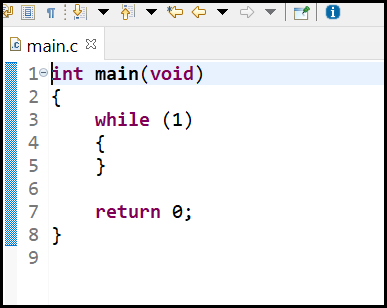
Let’s add some more code to see if my .text size changes:
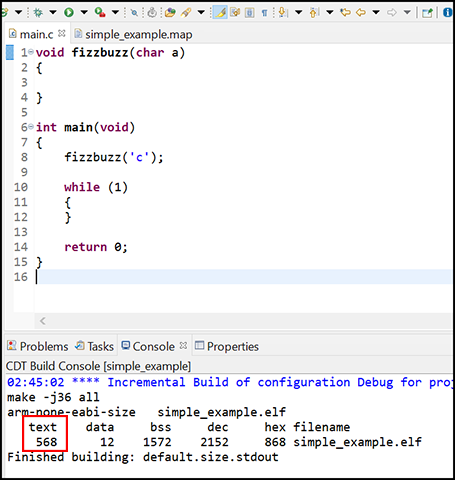
Aha! The .text size increased 24-bytes. If you check the map file you’ll see the function is added under the .text section:
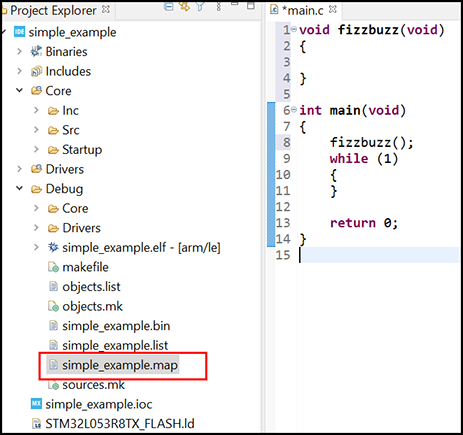

If you have a const variable, that will be added under .text and will be saved in FLASH. Here is an example:
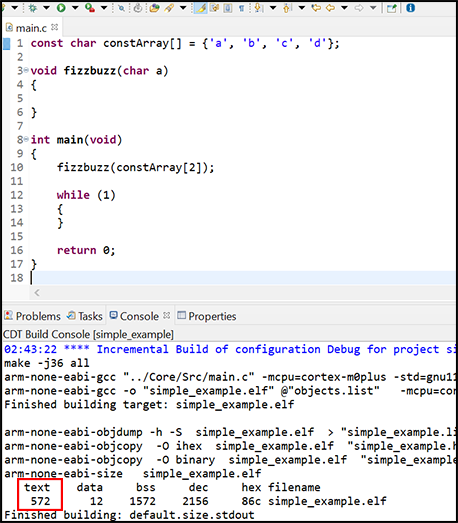
The .text size increased by 4-bytes (char takes 1 byte, the array size is 4).
Initialized Data segment (.data)
A data segment (.data) contains the global variables and static variables that are initialized and starts right after .text. To see an example let’s add a global variable into our code:

.data segment increased by 4-bytes. GlobalVar is not constant, so it will end up in RAM. But the value we initialized with (0x87654321) is constant, and will live in FLASH memory, i.e. Flash = .text + .data.
The initialization of the variable is done during the startup code. In the STM’s startup code this happens in CopyDataInit:
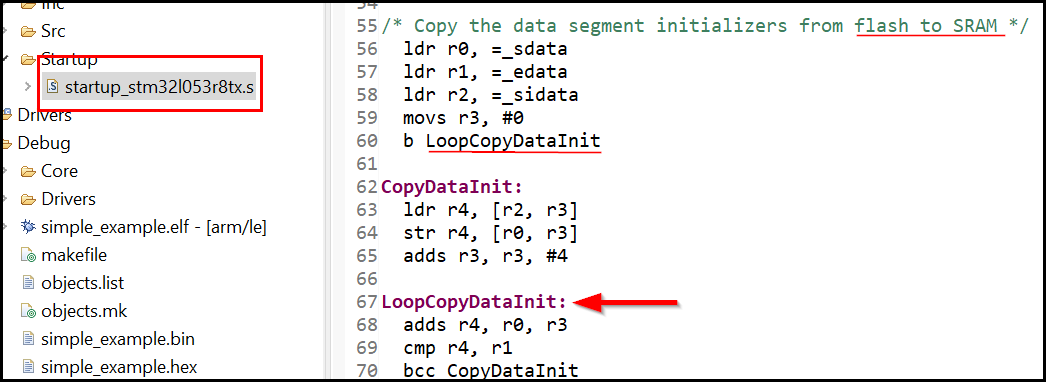
Uninitialized Data Segment (.bss)
Uninitialized data segment or bss segment, named after an ancient assembler operator that stood for “block started by symbol.” This segment starts at the end of the data segment and contains all global and static variables that do not have explicit initialization. bss also end up in RAM. Let’s add another global variable without initialization:
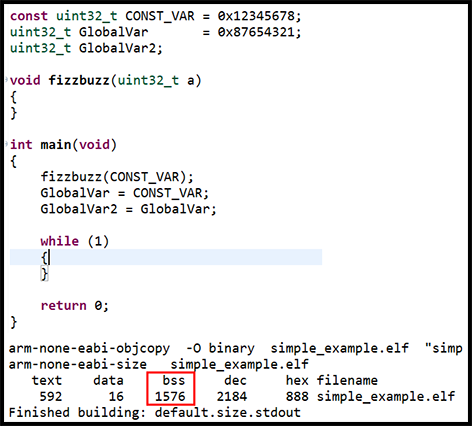
.bss increased by 4-bytes. Data in this segment is initialized to zero by the start-up code. The initialization happens in FillZerobss:
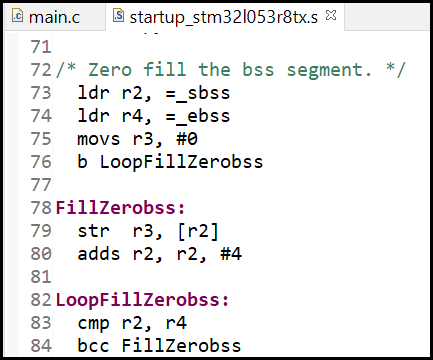
dec
dec is the summition of all three segments, dec = .text + .data + .bss.
Summary
In a nutshell:
-
‘text’ is your code, and constants (and also the vector table).
-
‘data’ is for initialized variables. This is count towards both RAM and FLASH. The initialized value allocates space in FLASH which then is copied from ROM to RAM in the startup code.
-
‘bss’ is for the uninitialized data in RAM which is initialized with zero in the startup code.